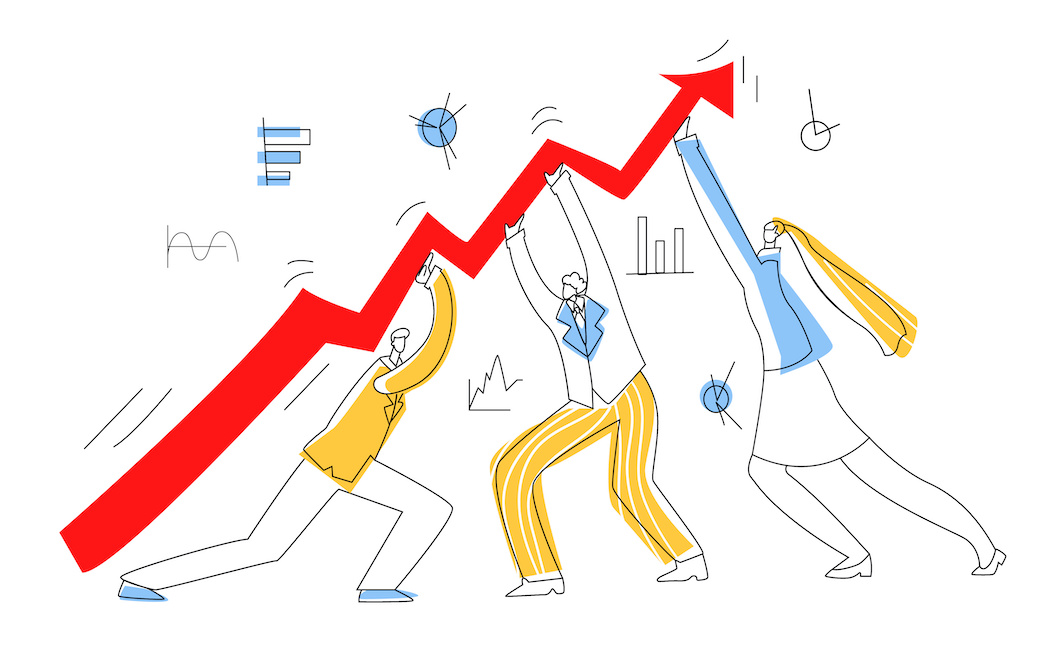Two more data releases last week show the Australian economy continuing its better-than-expected lift out of recession in the first half of 2020. Preliminary October retail sales rose by 1.6% m-o-m against market forecasts around –1.5% with a rise of 7.3% compared with October 2019. An even more impressive beat of market expectations came with the October labour force report.
Employment rose 178,800 in the month (market forecast –30,000). The labour force participation rate increased to 65.8% (market forecast 64.7%) from 64.8% in September. The unemployment rate edged up to 7.0% (market forecast 7.2%) from 6.9% in September and total hours worked in the month lifted by 21 million hours, or 1.2%, to 1.71 billion.
The extraordinary improvement in the labour market and impressive gain in retail sales in October occurred despite Victoria still being in lockdown in the reference month. They are the first signs that Australia will see a big lift in Q4 GDP when the figures are released in early March 2021. Of course, that is jumping the gun because Q3 GDP figures come first and are out next week and while likely to show a gain, it will be comparatively modest by international comparison.
Australia’s turn to shine comes through Q4 with the economy rising strongly on raft of boosters – government and RBA policy stimulus; covid infection suppression the envy of the world; Victorian post-lockdown euphoria; state border controls tumbling (notwithstanding what looks like a brief set-back with South Australian border restrictions); and a build-up of household savings to let loose as confidence builds.
The labour market is a good marker of how well the economy is recovering and how much further it must go to catch up to where it would have been if the covid-recession had not occurred.
The recession, the deepest in 90 years, left a big hole to fill in the labour market. Total employment peaked just ahead of the recession at 13.0 million people. Two months later, at the trough in May, it was down to 12.125 million a loss from the peak of 875,000. Since May, the recovery has been much stronger than expected with a gain of 648,000, but that still leaves total employment down 227,000 from the February peak.
Also, if the covid-recession had not occurred, total employment back in February was growing at an annual rate of around 245,000. Eight months at that annual growth rate would have seen total employment at 13.163 million in October. Effectively, total employment in October was 390,000 less than where it might have been if the recession had not intervened.
The recession took a particularly large toll on those wanting to participate in the labour force. The participation rate was 65.9% in February 2020 but had been as high as 66.2% in earlier months and was growing around a percentage point a year. Between February and May, the participation rate plummeted 3.2 percentage points to 62.7% but amid rising confidence that job opportunities are returning has lifted sharply since the May low-point to 65.8% in October, only 0.1 percentage point below where it was in February.
The almost complete recovery in the participation rate set against the still less than complete recovery in employment means that unemployment is still high, although nowhere near as high as feared in recent official and market forecasts.
The unemployment rate was 5.1% in February but jumped to a peak of 7.5% in June. It has come down to hover between 6.9% and 7.0% in September and October. These are much lower readings than expected even a month or two ago when forecasts of 8% to 10% were common, but they are still around two percentage points above the readings earlier in the year. The unemployment rate is also looking sticky around current levels because even when upside surprises occur in employment growth it is matched or bettered by a rising participation rate. Hence in October when employment lifted out of the ballpark by 178,800 the number of people unemployed still managed to rise by 25,600 to 960,900, which is 238,000 or 33.1% higher than the number a year ago.
High unemployment is a mark of the still large excess capacity still to be used up and is also reflected in very weak wages growth. The Q3 wage price index report was also released last week and showed wages up only 0.1% q-o-q and 1.4% y-o-y. Wages growth running at this weak pace means that low annual inflation stays low over at least the next year, notwithstanding the RBA’s efforts keeping interest rates exceptionally low and pumping up money supply.
In essence, the RBA recognises that economic growth and the labour market are performing better than they expected, even in their latest suite of economic forecasts published earlier this month. The upside surprises in the latest economic readings are welcome but make no difference to what it is trying to achieve with monetary policy, which is support rapid economic growth, use up the excess capacity generated by the deep recession then try and run the economy at above long-term trend growth pace for an extended period to rekindle wages growth to 3% annual pace, or higher, and in turn push up annual inflation inside 2-3% band.
Even with more upside surprises in monthly economic readings, these monetary policy objectives will take many months if not years to achieve. During this extended period, the RBA is unlikely to be shy to take whatever further easing measures are necessary, although with official interest rate settings at zero or just above, future policy action is likely to mostly revolve around RBA bond buying targets.

